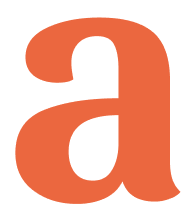University of Cincinnati, 2017
Visualization Studio Spring 2017
Steve Doehler Professor
Marissa Alexander-Scott NIOSH sponsor
PROJECT TEAM
Adriana Navarro-Sainz UX/UI Designer
Longwei Li UI Designer
Paulina Aguilera Industrial Designer
Jessica Taylor Nursing School
Shawnee Shuler Nursing School
Project Description
Partnering with The National Institute for Occupational Safety and Health (NIOSH), the multidisciplinary team was assigned to investigate the use of Personal protective equipment (PPE) among nurses. Healthcare workers are potentially exposed to hazardous drugs and chemicals everyday. NIOSH publishes a list of these hazardous drugs, the potential side effects, and the necessary precautions to take with the medication on the website. The goal is to design a mobile application for healthcare workers that would make this list easily accessible and include the recommended PPE to use when handling each drug.
Research
The team conducted contextual inquiries at the Cincinnati Children's Hospital Medical Center and UC Health Hospital. In-depth interviews with nurses, pharmacists and doctors were conducted as well.
Preliminary Findings
Two main concerns emerged from the interactions and research. One being the need to raise awareness on hazardous drugs and the categories within them. The second one, the need for nurses and other medical workers to be aware of all components of the PPE. Lastly, through this initial research phase, the team was able to sufficient data to define the target population.
Objectives
Based on the user needs, the concept needed to be focus on primary prevention. The main goal of this digital system would be to raise awareness and disseminate important information while being simple, easy to use in every context users might find themselves at, and inclusive for everyone (cognitive and vision impairments).
Conceptualization
The team came up with three different ideas to approach the issue. The main differentiator among these three was the technology used and the user-system interaction.
User Testing
A round of interviews and user testing sessions with lo-fi prototypes was conducted. A series of infographics was created in order to reflect on the participants who joined these activities, as well as to present their preferences on what concept or the other.
Final Concept
From the user interactions, the most preferred concept was the color code app. Each of the hazardous drugs categories will have a color and pattern assigned. Each physical hazardous drug bottle will have a color coded label that users can scan (a scanner is already used in their process) and on their desktop monitor, it will pop out a flashcard indicating the type of PPE required to handle that specific kind of drug.
System Design
While the color code approach help solving the immediate need, a larger system would support long-term learning and will focus on keep nurses engaged with their own safety and wellbeing at work. One of the main sub-components will be the badge, a sticker that can be easily placed on nurses' current badges as a cheat sheet. The mobile application plays a major role in providing accessibility to keep learning about these topics.
























